On Rivers of Blood: Fevre Dream by George R.R. Martin
For many of his fans, George R.R. Martin’s A Song of Ice and Fire (aka A Game of Thrones, the title of the first book in the series) is considered to be his masterpiece. Undoubtedly GOT is his magnum opus, but for me his masterpiece is 1982’s Fevre Dream, which is one of my favorite vampire novels. Everything about this novel — setting, characters, prose, theme — reads as if Martin had channeled Mark Twain and Bram Stoker, had conjured them from beyond the veil to look over his shoulders while he penned this wonderful tale.
Fevre Dream is set in the antebellum south of the United States between the years 1857 to 1870, along the Illinois, Ohio, and Mississippi Rivers. The main characters are a riverboat captain named Abner Marsh, a big, ugly, gruff but honest and honorable man, and Joshua York, a heroic and noble vampire who many of his kind eventually come to think of as their savior, the Pale King. The main thread deals with Marsh’s partnership and eventual friendship with York. And it’s this unlikely friendship that is at the heart and soul of this incredibly thoughtful and well-written novel. It begins when York approaches Marsh one night and offers him a grand business opportunity — to build the largest, fastest and most glorious riverboat ever seen, a riverboat painted all sparkling white, to which they give the name Fevre Dream.
[Click the images for Dream-sized versions.]
At first, Marsh doesn’t know that York is a vampire, and thus has no suspicions concerning the man’s strange ways. York’s idea appeals to Marsh, who has longed dreamed of owning the most famous riverboat ever to paddle her way through the waters of the Ohio, Illinois and Mississippi Rivers, and so their partnership is formed and their friendship is born. But York has a private dream of his own, a dream that at first he keeps to himself. Only when Marsh grows suspicious of York’s nightly comings and goings, his sleeping all day in his cabin, does he confront his partner, who finally takes him into his confidence. York’s dream is to find the last of his people, to bring them under his wing, to save them from the curse and the craving — the thirst for human blood.
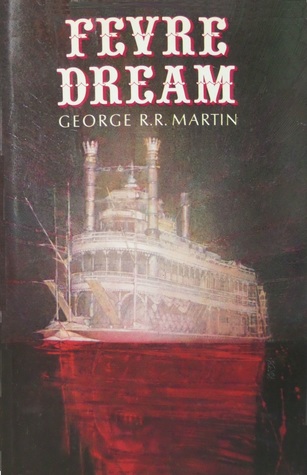 |
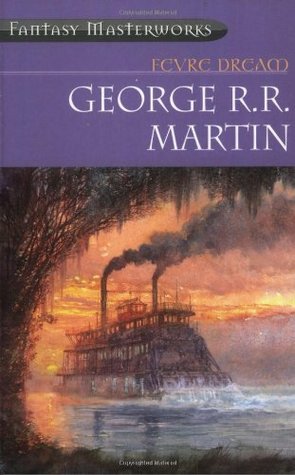 |
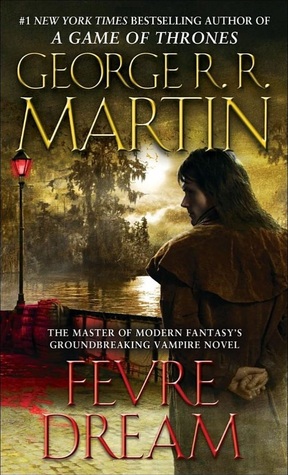 |
Centuries earlier, York succeeded in concocting a drink that stilled the craving and quenched the vampires’ thirst. He called it the Bloodwine, a vintage made of sheep’s blood, alcohol, laudanum, potassium salts and other ingredients — and it works. The Bloodwine can save the People of the Night, if only York can find his kindred and get them to drink it. At first, naturally, Marsh is skeptical of the whole story, but time and events later give him reason to believe York, and to trust him, too. Eventually, York finds a number of other vampires willing to side with him and live off the Bloodwine: Simon, who never speaks; Katherine, a sickly Britisher; and two foreigners Marsh simply calls Smith and Brown. And they tell York of Damon Julian, the Bloodmaster, whose circle of followers is killing and feeding off humans, both whites and slaves, throughout Louisiana.
Damon Julian and his coven of some twenty or so vampires dwell in the mansion of a plantation once owned by a wealthy family that fell prey to the vampire horde. Now the mansion is crumbling and the fields lie fallow. So Julian sends members of his clan to Baton Rouge and Bayou Sara, to search for needed funds and a new place to gather and hide. While Julian and his vampires are cruel, merciless and blood-thirsty, they pale in comparison to a mortal named Sour Billy Tipton, a sadistic piece of white trash who, like Dracula’s Renfield, serves the vampires in the hope of being given the gift of immortality. Billy buys slaves for the vampires to feed on, sees to Julian’s business affairs during the daylight hours, and commits his own fair share of mayhem and murder before this novel concludes. However, the dark gift Billy has been promised is nothing but a lie. That gift cannot be passed on; one must be born to the race known as the People of the Night.
Exciting riverboat races, dramatic events and grand adventures shift back and forth between Julian and his clan, and Marsh and York, who has found members of Julian’s flock and invites them aboard the Fevre Dream. York gives them the Bloodwine, and his dream of his people living in peace, side by side with mortals finally begins to see the light of reality. His drink relieves the vampires of their need and desire to feed on humans, and thus many bow to him as their Pale King. But then Julian and the rest of his followers learn about the Fevre Dream, and they meet with York aboard the white riverboat. Julian, however, cares nothing about the Bloodwine, a cure for the blood-craving, or York’s plans. Julian is so old he no longer even cares about feeding: he is as cold and cruel as the murderous Sour Billy, and he kills for the pure joy of it because to him, humans are but cattle, there to serve the needs of his people. So Julian sees the Fevre Dream as the perfect “home” for him and his kindred, and sets his plot into motion: to steal the riverboat, make York his slave and to feed on the boat’s passengers as it travels up and down the three rivers, going from town to town.
While all this is taking shape, Captain Marsh’s suspicions about Julian and his clan force him to once again confront York, to get at the truth. One night, York not only agrees to tell Marsh his personal story, he also tells him the story of the People of the Night, and explains that they are not supernatural beings but of a race much older than Man, a “lost race.” Sure, they drink blood, are near immortal and are fatally allergic to sunlight. But they are not the undead, and they don’t sleep in coffins filled with the dirt from their graves or native land. Part of the history York conveys to Marsh is the origin of his people.
I heard other things as well, legends that went beyond our oral history back to our ultimate origins in the dim dawn of time itself. Even there I saw the hand of your people, for our myths were taken from your Christian Bible. Brown, who had once posed as a preacher, read me passages from Genesis, about Adam and Eve and their children, Cain and Abel, the first men, the only men. But when Cain slew Abel, he went forth in exile and took a wife from the land of Nod. Where she came from, if the others were the only people in the world, Genesis did not explain. Brown did, however; Nod was the land of night and darkness, he said, and that woman was the mother of our race.
So the blood-drinking People of the Night are descended from the children of Cain and his wife.
Mortals were weak and few in number in this forgotten age before recorded history, and for centuries the People of the Night fed upon the humans, whom they called the People of the Day. But nature always finds a way and soon mortal human beings became the dominant race on earth. The birth rate among the vampires wasn’t very high, and their women usually died in childbirth. So mortals, who could breed, multiply at a much greater rate, and live both under sun and moon, slowly grew in numbers that overwhelmed this eldritch race. Soon the humans began to hunt the vampires, to destroy them and wipe them off the face of the earth. And they nearly succeeded. Over the centuries, the People of the Night were forgotten, passing on into folklore and myth, having been driven to the brink of extinction. The handful of survivors lived and hid in dark caves, away from the towns and cities of mortal men, cautiously preying upon humans and thus giving rise to the legend of the vampire.
Marsh trusts York and believes his story, and they begin to formulate their own plans to stop Julian and his blood-sucking sycophants.
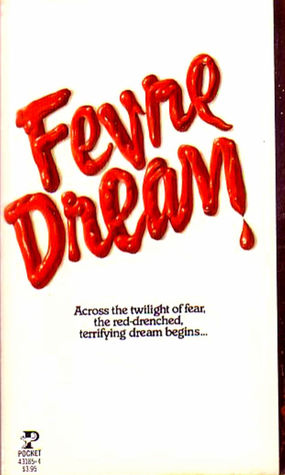 |
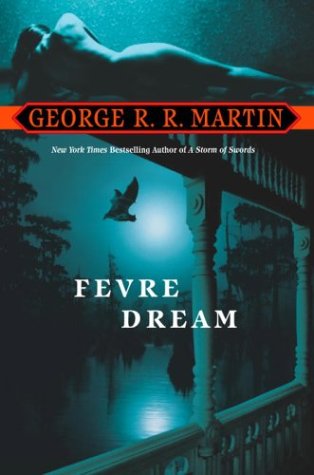 |
Later, during a fine dinner aboard the Fevre Dream, Julian and his brood overpower York and Marsh, and seize command of the white riverboat. After Sour Billy brutally murders a slave baby, Marsh manages to escape, and it then falls to the crew of the Fevre Dream — to men like Hairy Mike the first mate; Toby Lanyard the cook who was once a slave Marsh bought and set free; and the clerk, Jonathan Jeffers — to rescue York, destroy Julian and his coven, kill Sour Billy and reclaim their beloved riverboat. But there are complications, set-backs, and unexpected twists and turns as their plans go awry.
Marsh makes it safely to land and soon loses all track of the Fevre Dream. Many years later, he learns that his riverboat was painted black and given a new name, Ozymandias. But then it suddenly disappeared one night, and it was believed that a boiler had blown up and the riverboat sank with all hands and passengers aboard. But Marsh doesn’t accept this. He knows his riverboat is somewhere, hiding and lying in wait. And so he begins his search, which takes him many years, through the American Civil War and the Reformation. Eventually, he finds his riverboat, discovers that York is alive but a prisoner of Damon Julian. This discovery then sets the stage for a rousing climax that settles all scores.
Fevre Dream is a superb novel full of surprises, well-written and well told. Martin’s prose and dialog, the various accents and speech patterns of his characters, and the story’s pacing are all spot on. His large cast of characters is expertly conceived, and each one comes alive on the page. Being that the novel is set in the south during the years before (and after) the Civil War, themes and metaphors are there to see. While the subject of slavery is not what this story is about, slavery is not ignored, and there’s a Dickensian bleakness shadowing every page. Martin shows the cruelty, the brutality, and the sin of slavery, and he shows white slaveholders at their worst, and this is represented in Sour Billy Tipton. He’s a reprehensible and despicable human being — a mortal who preys on other mortals simply because he enjoys it; he himself is a slave, a slave to Julian and his brood vampires, and he’s a traitor to his own race. Sour Billy, unlike Renfield, is not a sympathetic character at all. He’s the foulest monster of them all, and you’ll cheer when he finally meets his demise. As for the Fevre Dream itself, I’ve always seen the white riverboat as a metaphor for freedom. Just as the film Casablanca (white house) is a metaphor for freedom from tyranny, oppression and genocide, the white riverboat is the symbol of freedom for the vampires, who are slaves to their own nature and origins… slaves to the blood-craving.
I’ve now read Fevre Dream four times since its original publication in 1982, and I’m sure I’ll read it again before I die. I recommend it to anyone who loves a great vampire novel, who loves something a bit different. This is a 5-star novel with true literary qualities and merit. And it’s one hell of a ripping yarn, too. I always hoped that Fevre Dream would be made into a movie, but perhaps it’s all for the best that Hollywood doesn’t get its hands on it. If you haven’t read this one, please do. I don’t think you’ll be disappointed.
Joe Bonadonna’s last article for Black Gate was his review of The Nexus by Mike McQuay.
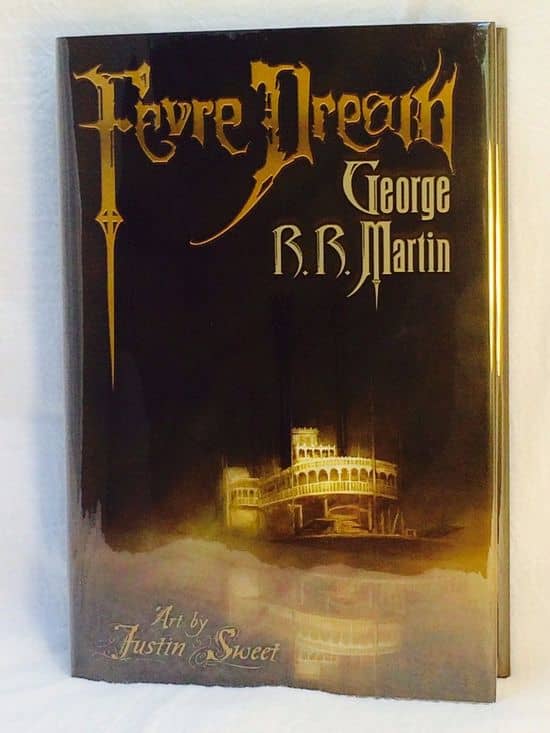

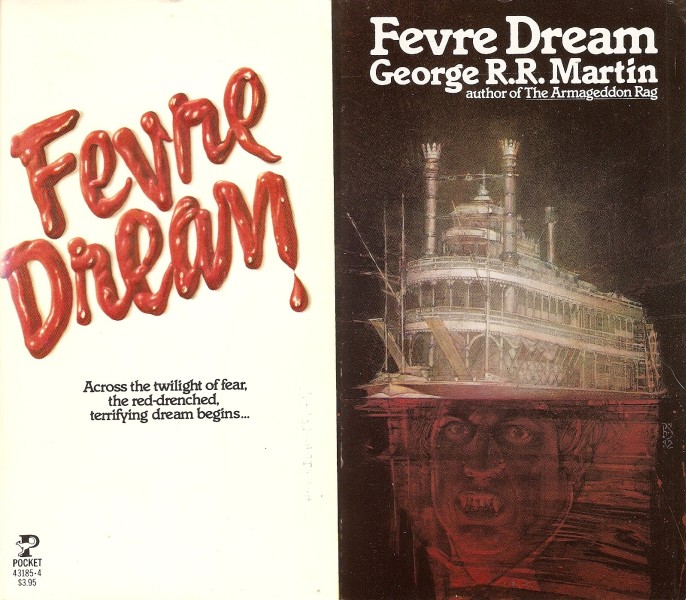
I really like this novel — my favorite of Martin’s for sure, and one of my favorite vampire novels.
Thank you, John O’Neill and Black Gate for once again making my words look SO great in it’s visual presentation.
Rich Horton — yes! This is one of the handful of novels I’ll be taking into the Afterlife with me. 🙂